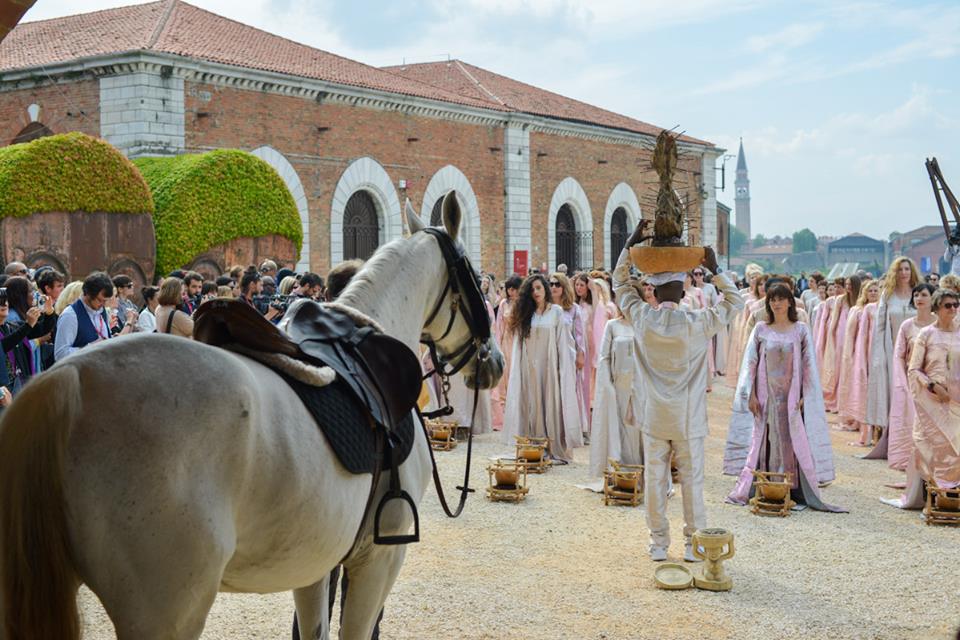Celebrate Art!! The Essence Of The Baroque At The Venice Biennale 2017
November 16, 2017
by Natalya Mills-Mayrena
In the summer residency at Spannocchia, visiting faculty Franco “Bifo” Berardi discussed with the cohort the topic of the Baroque. He explained that the Baroque time period was followed by an explosion of the European mind. Whether it be travel, geography or political discovery, a drastic transition occurred. Venice historically has been a hub for different cultures, and it is a topological site of this transition that created new visual phenomena. We see this explosion of the mind and visual arts in the Venice Biennale. Venice has the essence of the Baroque, with its artistic style of expression, juxtaposed with contrasting elements, conveying a sense of drama, movement, and often tension.Venice is an ideal location for the Biennale because it is a great symbol for this type of transition; it celebrates and brings together art from all corners of the globe.
This layering of ideas and history can also be seen in the type of art exhibited at the Biennale. One of the art pieces that stood out to me was the Things People Put On Their Heads, Carnival Headpiece 2016 by Tarxien Group Kingdom on exhibition at the Arsenal. The Caribbean Carnival arts can considered the Baroque based on their fusions of many cultures and ideas. This art piece shows the diversity and complexity of culture and colonization in Caribbean spaces. This feathered headpiece represents the African culture, the European history of colonization, as well as the history of indigenous people of the Caribbean. Another art piece at the Arsenale that had the sense of Baroque was a piece that was done by Nigerian artist Jelili Atiku called Mama Say Make I Dey Go, She Dey My Back.

He combined recorded performance art with traditional Yoruba divination system of Ifa, Hebrew traditional clothing, and a Guinean mask which collectively represented female energy. Using three different spiritual systems to produce a new work of art as a performance piece worked well with the theme of the Biennale Viva Arte Viva.
This explosion and laying of art is a great example of the Baroque sensibility. The Biennale was successful in merging, representing and celebrating the diversity of art, spiritual practices, histories and cultures.
